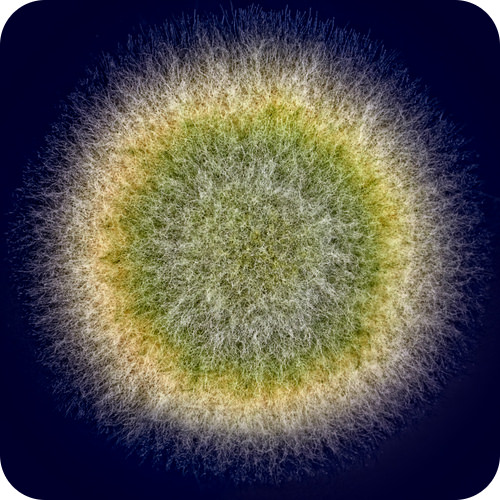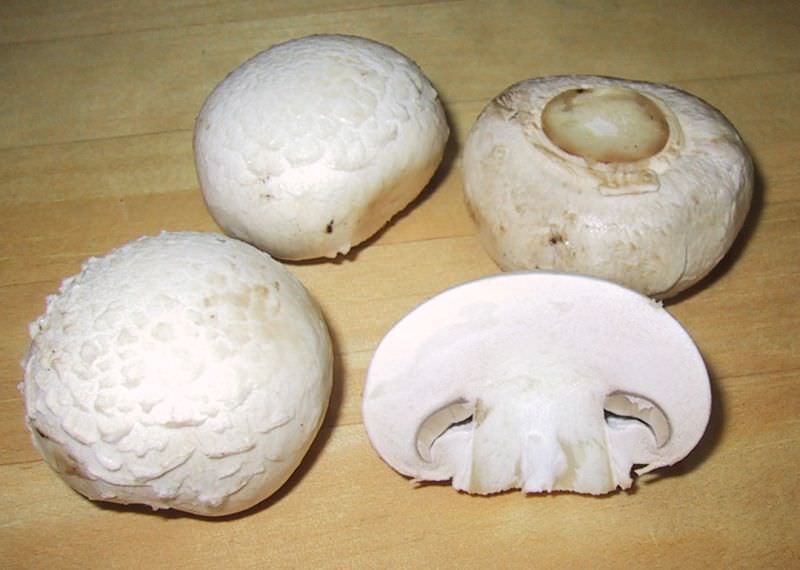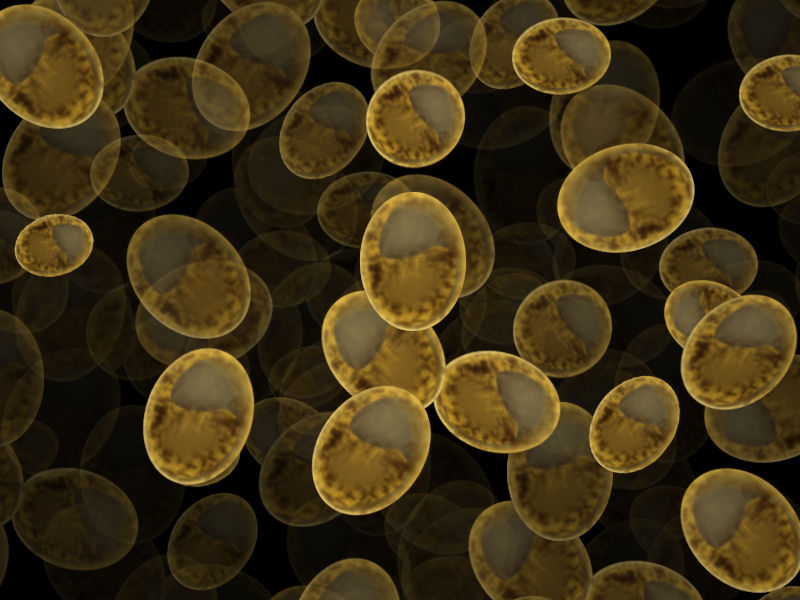8.3: Clasificación de Hongos
- Page ID
- 108027
\( \newcommand{\vecs}[1]{\overset { \scriptstyle \rightharpoonup} {\mathbf{#1}} } \)
\( \newcommand{\vecd}[1]{\overset{-\!-\!\rightharpoonup}{\vphantom{a}\smash {#1}}} \)
\( \newcommand{\dsum}{\displaystyle\sum\limits} \)
\( \newcommand{\dint}{\displaystyle\int\limits} \)
\( \newcommand{\dlim}{\displaystyle\lim\limits} \)
\( \newcommand{\id}{\mathrm{id}}\) \( \newcommand{\Span}{\mathrm{span}}\)
( \newcommand{\kernel}{\mathrm{null}\,}\) \( \newcommand{\range}{\mathrm{range}\,}\)
\( \newcommand{\RealPart}{\mathrm{Re}}\) \( \newcommand{\ImaginaryPart}{\mathrm{Im}}\)
\( \newcommand{\Argument}{\mathrm{Arg}}\) \( \newcommand{\norm}[1]{\| #1 \|}\)
\( \newcommand{\inner}[2]{\langle #1, #2 \rangle}\)
\( \newcommand{\Span}{\mathrm{span}}\)
\( \newcommand{\id}{\mathrm{id}}\)
\( \newcommand{\Span}{\mathrm{span}}\)
\( \newcommand{\kernel}{\mathrm{null}\,}\)
\( \newcommand{\range}{\mathrm{range}\,}\)
\( \newcommand{\RealPart}{\mathrm{Re}}\)
\( \newcommand{\ImaginaryPart}{\mathrm{Im}}\)
\( \newcommand{\Argument}{\mathrm{Arg}}\)
\( \newcommand{\norm}[1]{\| #1 \|}\)
\( \newcommand{\inner}[2]{\langle #1, #2 \rangle}\)
\( \newcommand{\Span}{\mathrm{span}}\) \( \newcommand{\AA}{\unicode[.8,0]{x212B}}\)
\( \newcommand{\vectorA}[1]{\vec{#1}} % arrow\)
\( \newcommand{\vectorAt}[1]{\vec{\text{#1}}} % arrow\)
\( \newcommand{\vectorB}[1]{\overset { \scriptstyle \rightharpoonup} {\mathbf{#1}} } \)
\( \newcommand{\vectorC}[1]{\textbf{#1}} \)
\( \newcommand{\vectorD}[1]{\overrightarrow{#1}} \)
\( \newcommand{\vectorDt}[1]{\overrightarrow{\text{#1}}} \)
\( \newcommand{\vectE}[1]{\overset{-\!-\!\rightharpoonup}{\vphantom{a}\smash{\mathbf {#1}}}} \)
\( \newcommand{\vecs}[1]{\overset { \scriptstyle \rightharpoonup} {\mathbf{#1}} } \)
\( \newcommand{\vecd}[1]{\overset{-\!-\!\rightharpoonup}{\vphantom{a}\smash {#1}}} \)
\(\newcommand{\avec}{\mathbf a}\) \(\newcommand{\bvec}{\mathbf b}\) \(\newcommand{\cvec}{\mathbf c}\) \(\newcommand{\dvec}{\mathbf d}\) \(\newcommand{\dtil}{\widetilde{\mathbf d}}\) \(\newcommand{\evec}{\mathbf e}\) \(\newcommand{\fvec}{\mathbf f}\) \(\newcommand{\nvec}{\mathbf n}\) \(\newcommand{\pvec}{\mathbf p}\) \(\newcommand{\qvec}{\mathbf q}\) \(\newcommand{\svec}{\mathbf s}\) \(\newcommand{\tvec}{\mathbf t}\) \(\newcommand{\uvec}{\mathbf u}\) \(\newcommand{\vvec}{\mathbf v}\) \(\newcommand{\wvec}{\mathbf w}\) \(\newcommand{\xvec}{\mathbf x}\) \(\newcommand{\yvec}{\mathbf y}\) \(\newcommand{\zvec}{\mathbf z}\) \(\newcommand{\rvec}{\mathbf r}\) \(\newcommand{\mvec}{\mathbf m}\) \(\newcommand{\zerovec}{\mathbf 0}\) \(\newcommand{\onevec}{\mathbf 1}\) \(\newcommand{\real}{\mathbb R}\) \(\newcommand{\twovec}[2]{\left[\begin{array}{r}#1 \\ #2 \end{array}\right]}\) \(\newcommand{\ctwovec}[2]{\left[\begin{array}{c}#1 \\ #2 \end{array}\right]}\) \(\newcommand{\threevec}[3]{\left[\begin{array}{r}#1 \\ #2 \\ #3 \end{array}\right]}\) \(\newcommand{\cthreevec}[3]{\left[\begin{array}{c}#1 \\ #2 \\ #3 \end{array}\right]}\) \(\newcommand{\fourvec}[4]{\left[\begin{array}{r}#1 \\ #2 \\ #3 \\ #4 \end{array}\right]}\) \(\newcommand{\cfourvec}[4]{\left[\begin{array}{c}#1 \\ #2 \\ #3 \\ #4 \end{array}\right]}\) \(\newcommand{\fivevec}[5]{\left[\begin{array}{r}#1 \\ #2 \\ #3 \\ #4 \\ #5 \\ \end{array}\right]}\) \(\newcommand{\cfivevec}[5]{\left[\begin{array}{c}#1 \\ #2 \\ #3 \\ #4 \\ #5 \\ \end{array}\right]}\) \(\newcommand{\mattwo}[4]{\left[\begin{array}{rr}#1 \amp #2 \\ #3 \amp #4 \\ \end{array}\right]}\) \(\newcommand{\laspan}[1]{\text{Span}\{#1\}}\) \(\newcommand{\bcal}{\cal B}\) \(\newcommand{\ccal}{\cal C}\) \(\newcommand{\scal}{\cal S}\) \(\newcommand{\wcal}{\cal W}\) \(\newcommand{\ecal}{\cal E}\) \(\newcommand{\coords}[2]{\left\{#1\right\}_{#2}}\) \(\newcommand{\gray}[1]{\color{gray}{#1}}\) \(\newcommand{\lgray}[1]{\color{lightgray}{#1}}\) \(\newcommand{\rank}{\operatorname{rank}}\) \(\newcommand{\row}{\text{Row}}\) \(\newcommand{\col}{\text{Col}}\) \(\renewcommand{\row}{\text{Row}}\) \(\newcommand{\nul}{\text{Nul}}\) \(\newcommand{\var}{\text{Var}}\) \(\newcommand{\corr}{\text{corr}}\) \(\newcommand{\len}[1]{\left|#1\right|}\) \(\newcommand{\bbar}{\overline{\bvec}}\) \(\newcommand{\bhat}{\widehat{\bvec}}\) \(\newcommand{\bperp}{\bvec^\perp}\) \(\newcommand{\xhat}{\widehat{\xvec}}\) \(\newcommand{\vhat}{\widehat{\vvec}}\) \(\newcommand{\uhat}{\widehat{\uvec}}\) \(\newcommand{\what}{\widehat{\wvec}}\) \(\newcommand{\Sighat}{\widehat{\Sigma}}\) \(\newcommand{\lt}{<}\) \(\newcommand{\gt}{>}\) \(\newcommand{\amp}{&}\) \(\definecolor{fillinmathshade}{gray}{0.9}\)
¿Qué tipo de hongo es este?
Obviamente un molde. Pero, ¿qué tipo de molde? Hay miles de especies conocidas de mohos. ¿Cómo se clasifican?
Clasificación de Hongos
Durante mucho tiempo, los científicos consideraron que los hongos eran miembros del reino vegetal porque tienen similitudes obvias con las plantas. Tanto los hongos como las plantas son inmóviles, tienen paredes celulares y crecen en el suelo. Algunos hongos, como los líquenes, incluso parecen plantas (ver Figura abajo).
 Musgo (Planta) y Liquen Creciendo en Corteza de Árbol. Tanto los hongos como el musgo están creciendo en este árbol. ¿Puedes diferenciarlos?
Musgo (Planta) y Liquen Creciendo en Corteza de Árbol. Tanto los hongos como el musgo están creciendo en este árbol. ¿Puedes diferenciarlos? Los Hongos del Reino
Hoy en día, los hongos ya no se clasifican como plantas. Ahora sabemos que tienen rasgos físicos, químicos y genéticos únicos que los distinguen de las plantas y otros eucariotas. Por ejemplo, las paredes celulares de los hongos están hechas de quitina, no de celulosa. Además, los hongos absorben nutrientes de otros organismos, mientras que las plantas elaboran su propio alimento. Estas son solo algunas de las razones por las que los hongos ahora se colocan en su propio reino.
Phyla fúngica
La clasificación de los hongos por debajo del nivel del reino es polémica. No existe un sistema único y ampliamente aceptado de clasificación fúngica. La mayoría de las clasificaciones incluyen varios phyla (el siguiente taxón mayor debajo del reino). Tres de los filos más comunes se comparan en la Tabla siguiente.
| Phylum | Descripción | Ejemplo |
|---|---|---|
| Zygomycota | principalmente terrestres, viven en tierra y compost y en alimentos como el pan |
molde de pan negro  |
| Basidiomycota | tienen muchas formas diferentes, existe una variación considerable incluso dentro de las especies |
setas de botón  |
| Ascomycota | que se encuentran en todos los ecosistemas terrestres en todo el mundo, incluso en la Antártida, a menudo involucrados en relaciones simbióticas |
levadura de panadero  |
Resumen
- Los hongos solían clasificarse como plantas. Ahora, se sabe que tienen rasgos únicos que los diferencian de las plantas. Por ejemplo, las paredes celulares fúngicas contienen quitina, no celulosa, y los hongos absorben los alimentos en lugar de hacer los suyos propios.
- Por debajo del nivel del reino, la clasificación de los hongos es polémica.
Revisar
- Indicar por qué los hongos alguna vez fueron clasificados como plantas.
- Explicar la importancia de la pared celular de quitina de los hongos.
- ¿A qué filo de hongos pertenecen los hongos?
| Imagen | Referencia | Atribuciones |
 |
[Figura 1] | Licencia: CC BY-NC |
 |
[Figura 2] | Crédito: Flickr:SNAPPA2006 Fuente: http://www.flickr.com/photos/snappa2006/4343940216/ Licencia: CC BY 2.0 |
 |
[Figura 3] | Licencia: CC BY-NC |
 |
[Figura 4] | Licencia: CC BY-NC |
 |
[Figura 5] | Crédito: Zappy's Fuente: Fundación CK-12 Licencia: CC BY-NC 3.0 |

